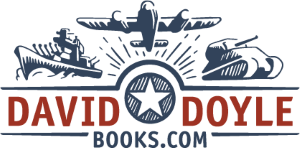|
| Please Support our Sponsors | ||||
 |
 |
Book Review
"39/40M Csaba Armoured Cars in World War 2"
By Dr. Chris Lloyd-Staples - Earls Barton, UK
.jpg)
Basic Item Information
| Title | 39/40M Csaba Armoured Cars in World War 2 |
|
Author |
Péter Mujzer |
|
Publisher |
Kagero Publishing |
|
ISBN/Stock Number |
978-8366673991 |
|
Media |
Soft Cover |
|
Number of Pages |
76 |
|
Text Language |
English |
|
Retail Price |
$26.95 USD |
|
Reviewer |
Dr. Chris Lloyd-Staples |
|
Review Date |
September 9, 2022 |
Review Summary
|
Review Type |
Full Read |
|
Basic Positive Features |
Many of the photos in the book have never been published before. The drawings are superb for modelers to use. |
|
Basic Negative Features |
Plans and drawings are not to any fixed scale. |
|
Recommendation |
A "Must Have" if you are making this armoured car |
Photos
_small.jpg)
_small.jpg)
_small.jpg)
_small.jpg)
_small.jpg)
_small.jpg)
_small.jpg)
_small.jpg)
_small.jpg)
_small.jpg) ______________________________________________________________________________________________________________________
______________________________________________________________________________________________________________________
Detailed Review
|
The vehicle The Csaba (pronounced ‘charba’)
39M was a modern car for its time, designed by Nicholas Straussler and
technically advanced. The armament included a 20mm Solothurn anti-tank
(AT) rifle and a Gebauer machine gun, with a light machine gun for use
as an anti-aircraft weapon. All of this was mounted
in a fully armored turret, and the armor was riveted from 9 mm plates.
The car was powered by a Ford engine manufactured in Cologne, Germany,
which provided good speed. The vehicle had two steering positions, front
and rear and an access door. The 39M vehicle was
fitted for radio, but there was a specialised version, the 40M. That
variant had a smaller turret, no AT rifle, extra radios and a frame
antenna. Estimates vary, but between 93 and 172
Csabas were produced, and they were very widely photographed.
Sadly, although some were around towards the end of WW2, none
survive today. Contents Introduction 1. Straussler and his designs 2. Design and development of the
Csaba armoured car 3. Production 4. Armoured car units,
organisation 5. Operational history 6. Camouflage and markings Bibliography I’m going to admit that the
Csaba is a personal favourite armored car, so I came looking for good
information. This book did not disappoint in any
respect. The amount of useful information is awesome,
and for a modeller the book provides everything that might be needed.
The opening chapter deals with the lamentable state of Hungarian
armor following WW1, and the various options that were being considered.
The next chapter looks at the work of Nicholas Straussler, a
Hungarian-born British citizen who came up with astonishing designs in
the 1930’s. He initially offered these to the British Army, but the
generals were very short-sighted and rejected his ideas (and also those
of Christie and some excellent Vickers designs).
Consequently, Straussler offered to work with his birth country, and the
Csaba was the result. The book then follows the
production and deployment of the vehicles in
reconnaissance battalions of the motorised and armored units.
The cars were extensively used in Transylvania, then in
Yugoslavia, and finally on the disastrous Eastern Front.
The whole of the book is fully supported with superb photos, but
this chapter is particularly good for demonstrating that these
lightly-armored reconnaissance vehicles were no match for anti-tank
guns, and mines also took a terrible toll.
The center of the book is full
of color profiles and photos, although some of these photos look as if
they have possibly been colorized from black-and-white originals.
Next we have a section containing scale drawings…….but without a
scale. This is a bit frustrating, as each set of
drawings is simply as large as the page allows, rather than a consistent
value. If only they had been scaled to 1/35 ………
There are drawings of the weapons, engine, interior layout and
the radio sets, all of these useful for adding detail.
Unit organisational charts complete this part of the book. After finishing the descriptions
of Csaba use in the last months of the war, the book concludes with
explanations of the camouflage and markings. Much
more is now known about the specific insignia and color schemes in each
unit and at each date. Now, modelers will have no excuse for getting
this wrong! In summary, this book puts
together everything that a modeller or researcher might need, and the
content is extremely professional. One photo (center
page 17) is reversed, and the number ‘one’ is often written as ‘one-one’
in the text. Aside from that, the drawings would have
been more useful at a fixed scale, but this can be dealt with. Overall, a very valuable book
for research and for making a very detailed model. |
A "Must Have". |
| Thanks to Casemate Publishers for the Review Sample. |
| Copyright: Dr. Chris Lloyd-Staples - September 9, 2022 |